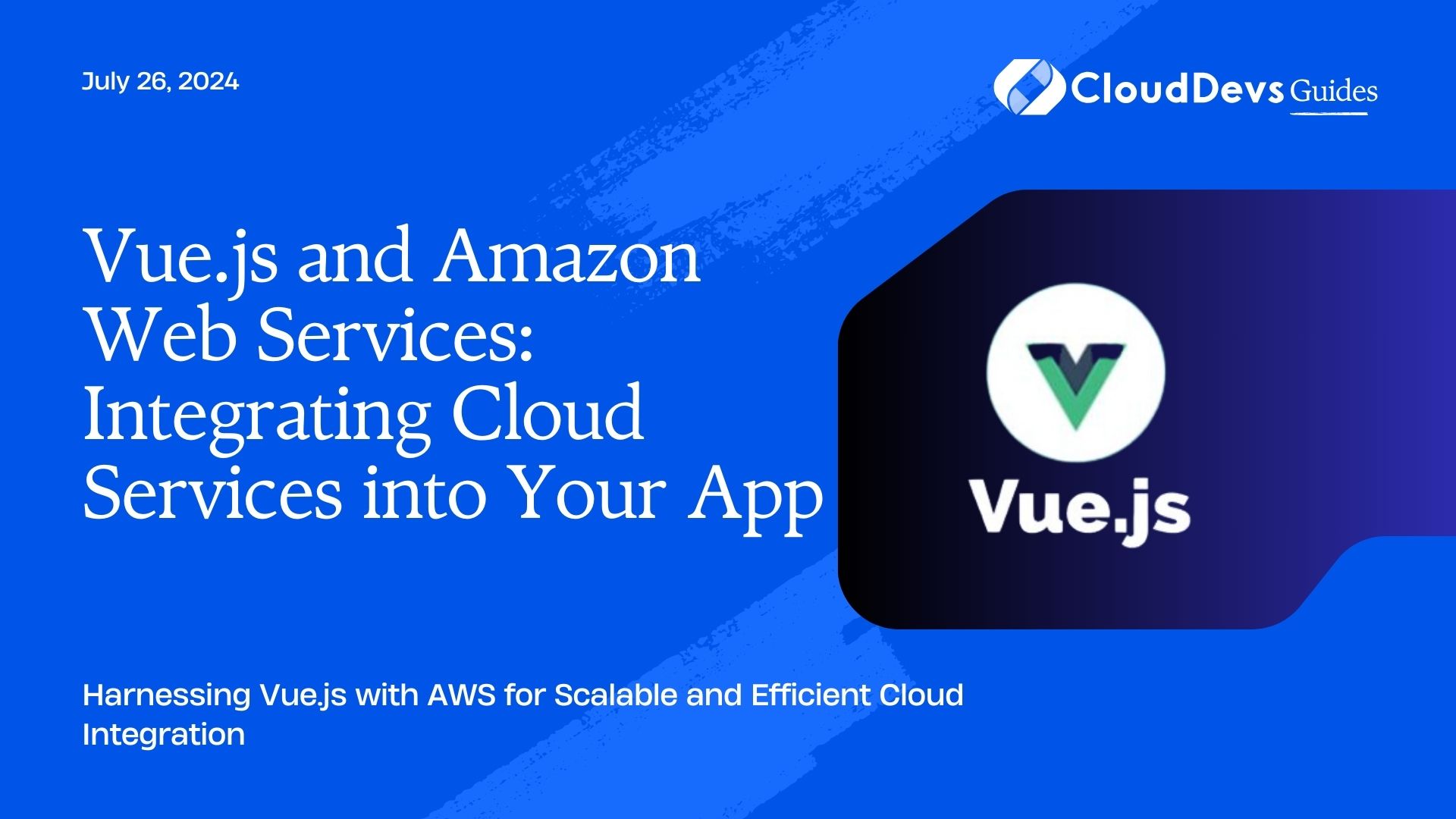Vue.js and Amazon Web Services: Integrating Cloud Services into Your App
Vue.js is a progressive JavaScript framework known for its simplicity and flexibility, while Amazon Web Services (AWS) offers a wide range of cloud services to enhance app functionality and scalability. Integrating AWS with Vue.js allows developers to leverage cloud computing power, storage, and services to build robust applications. This article explores how to effectively combine Vue.js with AWS, providing practical examples of integrating various AWS services into your Vue.js app.
Understanding AWS and Vue.js Integration
AWS provides cloud services that can handle tasks such as authentication, data storage, and serverless computing. Vue.js, with its reactive components and ease of use, makes it an excellent choice for building modern web applications. Integrating these two technologies enables developers to build scalable, efficient, and feature-rich applications.
Using Vue.js with AWS Services
1. Configuring AWS Amplify with Vue.js
AWS Amplify is a development platform that simplifies integrating AWS services into your app. Amplify supports features like authentication, storage, and APIs. Here’s how you can set it up with Vue.js.
Example: Setting Up AWS Amplify
First, install the Amplify CLI and initialize Amplify in your Vue.js project:
```bash npm install -g @aws-amplify/cli amplify configure amplify init ```
Install Amplify libraries in your Vue.js app:
```bash npm install aws-amplify @aws-amplify/ui-vue ```
Configure Amplify in your `main.js`:
```javascript
import Vue from 'vue';
import App from './App.vue';
import Amplify from 'aws-amplify';
import awsconfig from './aws-exports';
Amplify.configure(awsconfig);
Vue.config.productionTip = false;
new Vue({
render: h => h(App),
}).$mount('#app');
```
Example: Using Authentication with Amplify
You can now use Amplify’s authentication features:
```vue
<template>
<div>
<button @click="signIn">Sign In</button>
</div>
</template>
<script>
import { Auth } from 'aws-amplify';
export default {
methods: {
async signIn() {
try {
await Auth.signIn('username', 'password');
console.log('Sign in successful');
} catch (error) {
console.error('Error signing in:', error);
}
}
}
}
</script>
```
2. Integrating AWS S3 for File Storage
AWS S3 is a scalable storage solution that can be used to upload and manage files in your Vue.js app.
Example: Uploading Files to S3
Install the AWS SDK for JavaScript:
```bash npm install aws-sdk ```
Configure and use AWS S3:
```javascript
import AWS from 'aws-sdk';
const s3 = new AWS.S3({
accessKeyId: 'your-access-key-id',
secretAccessKey: 'your-secret-access-key',
region: 'your-region'
});
function uploadFile(file) {
const params = {
Bucket: 'your-bucket-name',
Key: file.name,
Body: file,
ContentType: file.type
};
s3.upload(params, (err, data) => {
if (err) {
console.error('Error uploading file:', err);
} else {
console.log('File uploaded successfully:', data.Location);
}
});
}
```
3. Using AWS Lambda for Serverless Functions
AWS Lambda allows you to run code in response to events without managing servers. You can use Lambda functions to handle backend logic for your Vue.js app.
Example: Invoking a Lambda Function
Set up the AWS SDK and invoke a Lambda function:
```javascript
import AWS from 'aws-sdk';
const lambda = new AWS.Lambda({
region: 'your-region',
accessKeyId: 'your-access-key-id',
secretAccessKey: 'your-secret-access-key'
});
function invokeLambdaFunction() {
const params = {
FunctionName: 'your-lambda-function-name',
Payload: JSON.stringify({ key: 'value' })
};
lambda.invoke(params, (err, data) => {
if (err) {
console.error('Error invoking Lambda function:', err);
} else {
console.log('Lambda function response:', data.Payload);
}
});
}
```
4. Leveraging AWS DynamoDB for NoSQL Database
AWS DynamoDB is a NoSQL database service that provides fast and predictable performance. Integrate DynamoDB into your Vue.js app to manage data.
Example: Querying DynamoDB
Install the AWS SDK and configure DynamoDB:
```javascript
import AWS from 'aws-sdk';
const dynamodb = new AWS.DynamoDB.DocumentClient({
region: 'your-region',
accessKeyId: 'your-access-key-id',
secretAccessKey: 'your-secret-access-key'
});
function getDataFromDynamoDB() {
const params = {
TableName: 'your-table-name',
Key: { id: 'your-item-id' }
};
dynamodb.get(params, (err, data) => {
if (err) {
console.error('Error fetching data:', err);
} else {
console.log('Data retrieved:', data.Item);
}
});
}
```
Conclusion
Integrating AWS with Vue.js offers powerful capabilities for building modern, scalable applications. Whether you’re using AWS Amplify for authentication, S3 for file storage, Lambda for serverless functions, or DynamoDB for data management, these services enhance the functionality and performance of your Vue.js applications. Leveraging these tools effectively will help you build robust and scalable cloud-powered applications.
Further Reading:
Table of Contents









